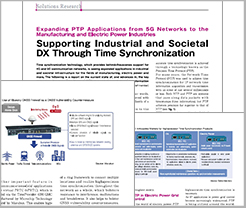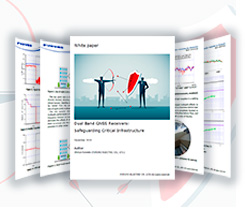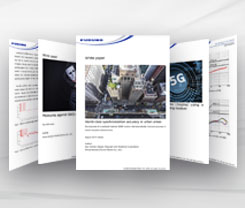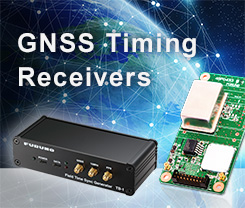Column
What Was "Cesium" About Cesium Akina?
Reminiscing on the Era of Analog Records
The square jackets used to store 30-centimeter LP records served as canvasses for designers to showcase their skills. These were exciting objects for enthusiasts to collect. The Beatles' tenth album, released in 1968 and simply titled The Beatles, featured a solid-white jacket cover design which led to the coining of its widely used nickname, "The White Album." The white design was likely chosen in part to clearly convey the album's name (as distinct from the identical band name), and also to leave a strong impression on consumers and fans in an era characterized by flamboyant and dazzling cover art throughout the music industry. Other albums received nicknames as well, such as the Beatles' Abbey Road, with the group members crossing a so-called "zebra crossing" crosswalk, which was nicknamed "Zebra," and Pink Floyd's The Dark Side of the Moon which was nicknamed "Prism" due to the album art depicting a prism through which white light is being refracted.
This custom of giving nicknames based on jacket artwork is a nostalgic and enjoyable one unique to the era of analog music. As for the digital era, I have found a different sort of example in which an impactful nickname was attached to a set of albums.
An Album Nickname for the Digital Music Era
The albums to which I refer go by the collective nickname "Cesium Akina."
Akina Nakamori is a highly acclaimed Japanese female singer. Within the Japanese populace, her first name, Akina, has become synonymous with Akina Nakamori herself, such is her level of recognition.
Akina Nakamori's Utahime ("Princess of Song"), released in 1993, was remastered for the 2002 edition Utahime Double Decade, and this was followed by her 2017 album Utahime Special Edition. Together, these special remaster albums are referred to as Cesium Akina by a select group of adoring fans.
In the music industry, remastering is a process of digitizing a sound source that was originally analog. In practice, it means taking advantage of steadily advancing sound-digitization technologies to reproduce the qualities of the original analog sound as faithfully as possible in modern, digital-data format. The liner notes for the Utahime Double Decade remaster contain the following explanation in tiny text:
"The music of this album has been remastered using a cesium clock—a type of clock so precise that it has become the world standard for keeping time! Here at Universal Music, our technical experts have applied cesium clock technology (high-performance beam tube technology) in the field of digital audio remastering. This has enabled us to realize the precise and delicate sound quality required for fine musical expression, at ten million times the precision of standard CD audio."
 The release of Akina Nakamori's Utahime on compact disc garnered ignorable popularity even in today's music market, dominated by streaming services. And it even enjoyed an additional re-release on June 28, 2023, as Utahime Special Edition (Special Price Edition) (UPCY-7867/8). The album pictured here (author's photo) is the 2002 Utahime Special Edition
The release of Akina Nakamori's Utahime on compact disc garnered ignorable popularity even in today's music market, dominated by streaming services. And it even enjoyed an additional re-release on June 28, 2023, as Utahime Special Edition (Special Price Edition) (UPCY-7867/8). The album pictured here (author's photo) is the 2002 Utahime Special Edition
(https://store.universal-music.co.jp/product/upcy7867/).
The Relationship Between Standardization, Quantization and Clock Accuracy
Let's explore the relationship between improvements in clock accuracy and advances in audio quality.
Changing an analog sound source to a digital format is a signal conversion process commonly called analog-to-digital conversion, or ADC. During ADC, a continuous-time analog signal is sampled, meaning it is converted to a discrete-time digital signal. Through the quantization process, the continuous and unbroken analog signal is split up and converted into a discrete digital signal.
One way to illustrate ADC visually would be to draw an audio signal's waveform on graph paper, with the horizontal axis representing time and the vertical axis representing signal amplitude. The points at which the waveform line intersects the grid lines could then be recorded as coordinate values. With CDs, the sampling frequency is 44.1 kilohertz, and the quantization bitrate is 16 bits. In other words, the signal oscillates 44,100 times per second, and the bitrate of 16 bits indicates 32,768 bits of data per second. In principle, the finer the "grid size" is and the smaller the inconsistency of spacing throughout the grid is, the more accurate the post-ADC representation of the original signal waveform will be.
With Cesium Akina, a cesium atomic clock was used as the standard clock for remastering to stabilize the time element, meaning it minimized to the greatest possible degree any inconsistencies in the horizontal time axis, which in turn enabled higher audio quality. This made Cesium Akina a big hit among hardcore audiophiles, which led to the popularization of the multiple-album nickname. As someone who has a deep interest in high-end audio, I can understand the enthusiasm of these fans.
Likening Atomic Clock Atoms to a Guitar
In a cesium atomic clock, the reference frequency is provided by atoms of cesium, an element which has the atomic number 55 and uses the symbol Cs. On the periodic table, cesium is grouped together with lithium, sodium, and other elements in the alkali metals column. It is a highly reactive element that exhibits high combustibility to the point that simply throwing it into water can trigger an explosion, which is related to the fact that a Cs atom has only one electron in its outer shell. An atomic clock makes use of the energy state changes of this atom caused by mutual interaction between its one electron and its nucleus.
One way to explain this principle would be to liken the cesium atom to a familiar musical instrument: the guitar. When one taps the body of a guitar, it vibrates, which causes the strings to vibrate in turn. Cesium, which is used in the atomic clock, vibrates as a "string" at a frequency of 9,192,631,770 hertz. Some atomic clocks use atoms of other elements such as rubidium (Rb), hydrogen (H) and strontium (Sr), each of which has its own unique frequency—or "tone," in continuation with the guitar string analogy. Additionally, different Cs atoms can have differing tones as "strings" in the instrument that is the atomic clock, but only one type of "string" is used to establish a time definition for the clock function.
These atoms serve as a tuning fork of sorts to tune the "guitar," or the atomic clock. By exposing the atoms to 9.1-gigahertz microwaves and keeping them in a resonating state, it's possible to obtain a precise 9,192,631,770 hertz frequency. Then, by counting out 9,192,631,770 of these oscillations, it's possible to accurately determine the exact length of 1 second.
In actual operations, the atoms in an atomic clock must be kept at ultra-low temperatures and shielded from outside magnetic fields, all of which require sophisticated equipment and design. Going back to our guitar comparison, if one were to move the instrument around too forcefully or bump two guitars together, it would be difficult to pick out the single, specific sound one hopes to hear. To hear the desired sound with the same accuracy as the atomic clock identifies a frequency, one would need to place the guitar on a flat surface in a quiet place—perhaps going so far as to use an anechoic chamber—then strum gently and listen intently.
By the way, the atomic mass number of cesium used in an atomic clock is 133, calculated as the number of protons plus the number of neutrons in the atom. Some Cs isotopes have differing numbers of neutrons, such as cesium-134 and cesium-137. These are often used as indicators of radioactivity levels, and thus have negative connotations in many people's minds. Cesium itself is not inherently dangerous: the cesium-133 used in atomic clocks is not radioactive, and atomic clocks pose no risk of radiation exposure or any other such reaction.
Enriching Music Culture Using GNSS Standard Clocks
For Cesium Akina, a high-performance standardized clock is required to fully enjoy the high-quality playback results. In other words, high-quality standard clocks are a must during both remastering (ADC) and playback (digital-to-analog conversion, or DAC) in order to realize high-fidelity reproduction of the original audio.
When reading blogs written by Cesium Akina fans, many of them did, indeed, have used rubidium clocks for DAC. And although the Cesium Akina nickname is not widely known among standard consumers, it is familiar to virtually everyone in a certain category of fans, which is due to the fact that only audiophiles who have achieved a certain degree of obsession can truly appreciate the remasters.
As a side note, GNSS standard clocks have become attainable in recent years at more affordable prices than cesium atomic clocks, rubidium atomic clocks and the like. These are synchronized with GNSS satellites and atomic clocks at control stations, meaning their accuracy is on par with professional equipment. It's unlikely that we'll see the rise of new, GNSS-satellite-derived nicknames such as "the GLONASS pianist" for recordings of an outstanding pianist's performances, "the Galileo Tenor" or "the Galileo Soprano" for a celebrated opera singer's collection, or "the Michibiki Vocalist" for an album by a popular Japanese enka performer. However, it is informative and fascinating to know that one advantage of improved clock accuracy is the enhanced audio quality and at the same time the fun of music also enhances.
Writer introduction
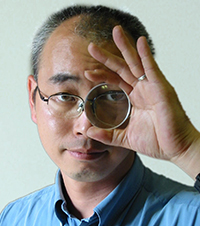
Mr. Mitsunari Kita Science and technology writer
Born in Ishikawa Prefecture in 1964. Based on his experience in covering industrial technology, cutting-edge technology, and space development, he is passionate about unraveling and conveying difficult topics in an interesting way to people of all ages, from children to senior citizens. From 2009 to 2014, he was a member of the editorial board of "JAXA's," the official magazine of the Japan Aerospace Exploration Agency. Author and co-author of the following books: 『あなたにもミエル化? ~世間のなりたちを工学の視点から~』(幻冬舎mc)、『私たちの「はやぶさ」その時管制室で、彼らは何を思い、どう動いたか』(毎日新聞社)、『東京大学第二工学部70周年記念誌 工学の曙を支えた技術者達』(東京大学生産技術研究所) etc.,
* All registered trademarks used herein are the property of their respective owners.
Pick up
Column
FURUNO Column
-
Common Problems That Affect GPS/GNSS Time Synchronization

-
How to select GPS/GNSS antennas for time synchronization

Column by Mr. Mitsunari Kita (Science and technology writer)
-
The Observation Network Created by the Earthquake Proves Useful for Accurate Timekeeping (Part Two of Two) - A Solution to the "Mr. Higgins Problem" in Space -

-
The Observation Network Created by the Earthquake Proves Useful for Accurate Timekeeping (Part One of Two)

-
FURUNO ELECTRIC Joins Experts From Around the World on a Norwegian Island for Jammertest 2024

-
Unraveling the Mysteries of Venus Based on "Occultation"

-
Atoms as the Basis for Measuring Both Fleeting Moments and Near-Eternities

-
Time Progressing with a Speed Difference of Just 4.4647 Ten-Billionths!

-
Critters Who Revitalize Forests Through the Spreading of Food Caches

-
Small But Significant Variances in Gravity and Time (Part Two of Two)

-
Small But Significant Variances in Gravity and Time (Part One of Two)

-
Why the GT-100 Time-synchronization GNSS Receiver Module is Like Fragrant Soup Curry

-
What Rainbows Can Teach Us About Dual-Band GNSS

-
The Amazing Things That Are Possible With Just a Clock

-
When Subterranean Earth Meets Outer Space

-
Using the TB-1 and GT-100 at a "Multipath Dojo" in the Major Metropolis of Osaka

-
The Disaster-struck Field Time Sync Generator TB-1: True Performance Revealed Through a Lightning Strike

-
Knowing the "Now" of Our Earth Through GNSS

-
The Reason GPS Counts Time in 1.5-second Intervals

-
Similarities Between "On My Count!," the 117 Notification System, and GPS

-
Reliable Clocks Help Us Find a Silver of the Clouds

-
Why Time Synchronization is Vital for Criminal Investigations, Seismograph Measurements and Solar Wind Observation

-
What Was "Cesium" About Cesium Akina?

-
Updating Analog Broadcasting with GNSS Time Synchronization Technology

-
The Long History of One Second (Part II)

-
The Long History of One Second (Part I)

-
A Solo Journey - Three-liter Microsatellite Mission Support via GPS (GNSS) and Satellite Communication -

-
A Solo Journey - The GPS (GNSS) Tracking System That Helped Kenichi Horie Cross the Pacific -

-
The Day After a Superflare - Effects on power and wireless communication infrastructures -


